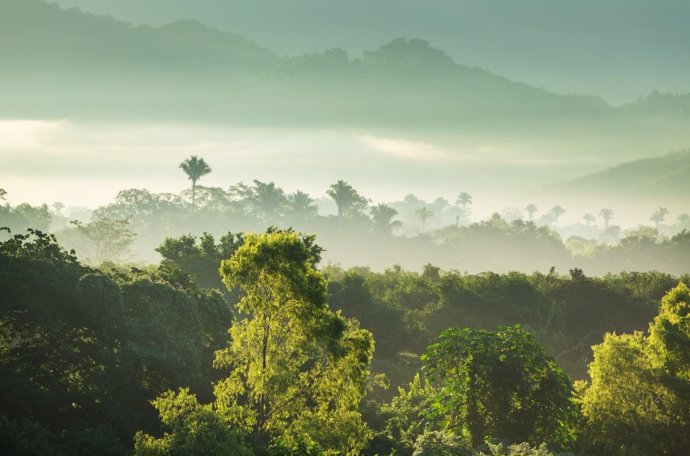Tropical and non-tropical ecosystems absorb large amounts of carbon that was previously released into the atmosphere through human CO2 emissions. Therefore, these ecosystems are a natural buffer against climate change. – COLOURBOX/LEIPZIG UNIVERSITY
September 27 () –
Strong El Niño events could be responsible for short-term upward fluctuations in the CO2 content in the atmosphere, according to new research.
Between 1959 and 2011the CO2 content in the atmosphere responded twice as strongly to temperatures in the tropics as before.
This has often been attributed to increased droughts in the tropics and changes in carbon cycle responses caused by climate change. However, the new study by researchers at the Max Planck Institute for Biogeochemistry and the University of Leipzig suggests that strong El Niño events may be the explanation.
Their findings, which call into question previous assumptions about the relationship between CO2 in the atmosphere and temperatures in the tropics, are published in the journal Science Advances.
Both tropical and non-tropical ecosystems absorb large amounts of carbon that was previously released into the atmosphere through human CO2 emissions. Globally, Earth’s surface ecosystems act as a carbon sink, absorbing on average about a third of human CO2 emissions. Therefore, these ecosystems are a natural buffer for climate change.
In the 1980s and 1990s, researchers observed a greater fluctuation in global carbon storage on land, and it appeared that the CO2 growth rate was particularly sensitive to temperatures in the tropics. The Jena and Leipzig researchers found that this “doubling” of sensitivity was due to the increased incidence of El Niño events in the 1980s and 1990s compared to the period 1960-1979.
VEGETATION RELEASES LARGE AMOUNTS OF CO2
This also includes the extreme El Niño events of 1982/83 and 1997/98. El Niño events cause severe droughts and heat waves in the tropics, which affect plant growth and therefore reduce carbon uptake. During El Niño times, vegetation even releases large amounts of carbon that would otherwise be sequestered in soil or forests. This causes the CO2 content in the atmosphere to increase.
The authors of the study highlight that this increase in CO2 is due to internal climate variability, rather than a systematic change in the carbon cycle caused by climate change. “Our results show that this doubling of sensitivity is not necessarily a sign of a fundamental change in the response of the carbon cycle to climate change,” says Na Li of the Max Planck Institute for Biogeochemistry, first author of the study, in a statement. but is caused by the combination of extreme El Niño phenomena and its global impact.
“Through our work, we were also able to show that this phenomenon is related to the ‘slow in, fast out’ dynamics of the carbon cycle. This means that carbon is slowly absorbed by ecosystems, but can be released again suddenly and quickly during extreme weather events such as strong El Niño“explains Professor Ana Bastos, from the University of Leipzig, lead author of the study.
The results of this study are important because they highlight uncertainties in future climate projections. Until now, it was assumed that a greater sensitivity of CO2 increases to temperatures in the tropics is due to long-term climate-related changes in the carbon cycle and thus in the global climate system.
However, the study shows that extreme events can cause short-term fluctuations that They do not necessarily indicate permanent changes in the carbon cycle.
“These new findings could help develop more accurate climate models and reduce uncertainties in predicting future climate scenarios,” says Associate Professor Dr. Sebastian Sippel from the University of Leipzig.
He also stated that we need to better understand how extreme climate events like El Niño affect carbon dynamics in order to make more reliable forecasts for the future.


![[Img #74662]](https://thelatestnews.world/wp-content/uploads/2024/12/Organisms-with-the-shortest-life-150x150.jpg)










![[Img #74662]](https://thelatestnews.world/wp-content/uploads/2024/12/Organisms-with-the-shortest-life-300x200.jpg)


Add Comment